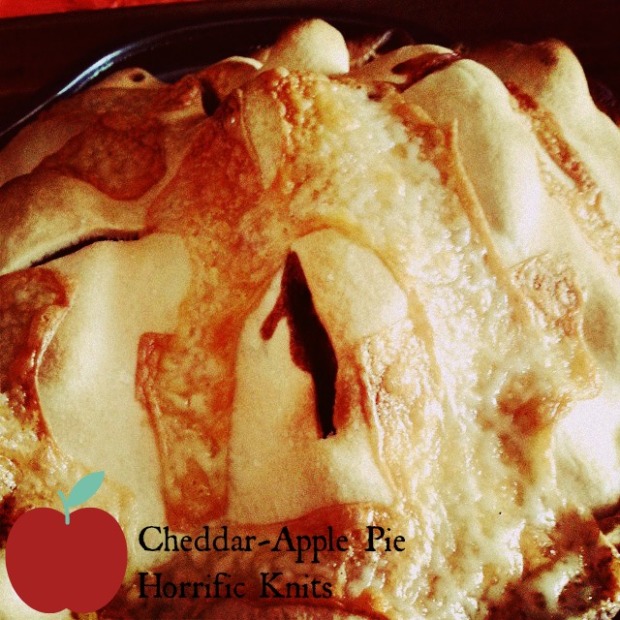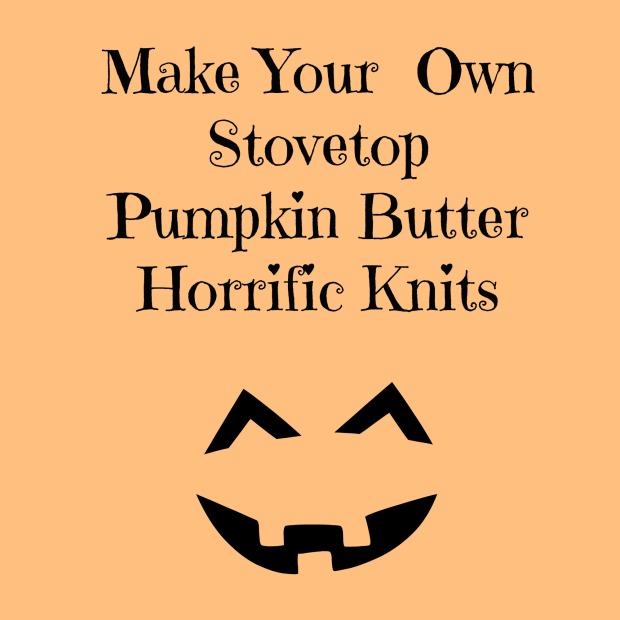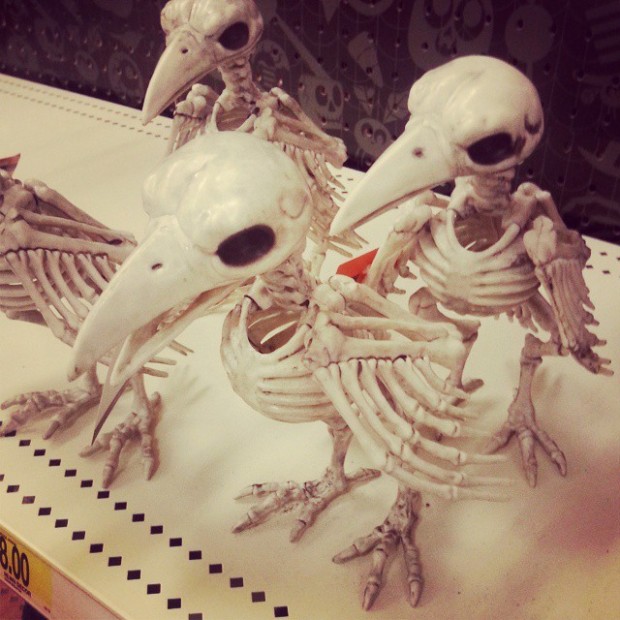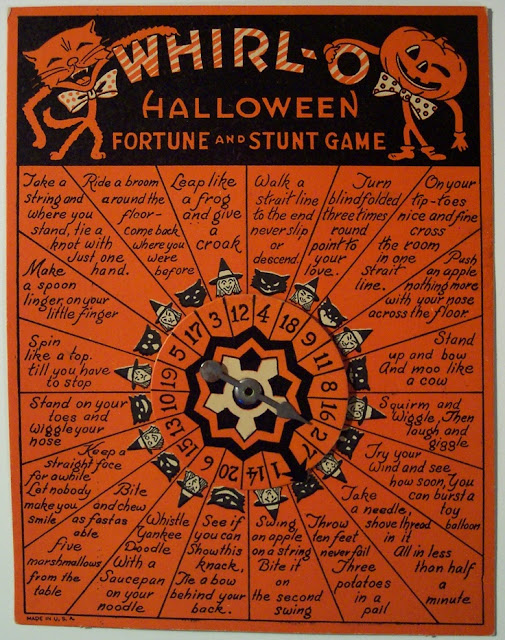It flows better than Halloween Sale.
All orange and black commissions, and size or fiber, placed before November 1st will be an automatic 25% off.
Place an order via Rieshaw Knits
Trade and cash free maker; PayPal accepted


It flows better than Halloween Sale.
All orange and black commissions, and size or fiber, placed before November 1st will be an automatic 25% off.
Place an order via Rieshaw Knits
Trade and cash free maker; PayPal accepted



This is a repost from 2014, but in light of it being Halloween season again, and actually an election year, I’m pulling this one out again. No, I have no idea currently which mask is selling better this year, and I would be surprised if that data is out yet-but I might check in a few weeks.
I know that we’re now in November and therefore past the point where this is relevant, but at the same time, I really like this quirk (assuming this is true, and I sort of want it to be true).
It’s claimed that you can tell who will win a presidential election in November by what masks are sold for Halloween in October. This claim holds true for American society, but I’m not sure if it’s limited to Americans, if it’s because Halloween is currently a heavily American holiday, or if no one’s bothered paying attention to anywhere other than the States.
But it’s apparently accurate with a fairly freakishly high success rate-you can tell who will win by who is the most popular candidate to dress up as.
However, that’s probably the key word: popular. While the ‘nasty’ costumes for less than loved politicians are common, people like to collect and surround themselves with images of things that they like. Therefore, they’re going to be more likely to buy a costume of someone they are more willing to vote for than those they have no interest in. It’s an extension of popular culture; the images that people like are the ones that they want to dress up as (I read that Ryan Murphy was startled to already see Twisty the Clown costumes on the street this year-and multiple of them, to boot). The trend supposedly dates back to the 1988 election, with Reagan being the successful candidate and the highest selling mask. Or 1980, depending on source. However, the basic idea is still the same-for the past 30 years or so, the American election can be predicted by the sale of Halloween costumes.
This is one of those trends that is weird enough that pop culture loves it. It makes for a wonderful headline (Halloween predicts presidents! Next it’ll rain frogs!). I like it because it starts getting into those interplays that make sociology fascinating.
Strange Election Indicators: Halloween Masks
6 Bizarre Factors that Predict Every Presidential Election
Halloween masks predict Obama win 60-40
Halloween makes predict elections?
For Halloween 2012 prognosis, look to…Halloween masks?
Halloween Presidential Mask Sales Have Correctly Predicted Last Five Elections
The Halloween Host
S. M. Barrett
209 Pages
Accessed as an Ebook
$0.99 on Amazon at time of writing
I am actually annoyed with myself for not having written this review sooner, as I actually dearly loved this book and will gladly give it one of my strongest recommendations thus far on this blog.
This isn’t horror, though there are some eerie aspects to it and it falls a little too far into magic for true magical realism (I suppose then that the genre answer here is seasonal fantasy). This isn’t even fully creepy, though again, some of the imagery is a little dark. But truly just a little.
In all honesty this is probably one of the ‘lightest’ pieces of fiction I’ve covered on this blog, but it’s a beautiful book, especially if you’re a deep lover of Halloween. I am. Technically falling within the range of YA fiction the book is actually full of a dense, rich imagery of a type that a horror fan will find appealing-even if the imagery itself isn’t horrifying. One of the aspects of the book I do find most endearing is the use of traditional but often overlooked seasonal imagery, things that are most definitely Halloween appropriate but get overlooked in modern media in favor of gore and jump scares (and which does make this book older child safe-there is discussion of death but nothing graphic throughout the novel).
Arthur Brim has failed his son, and through failing his son, has failed the whole of Halloween. He one day finds a guest in his kitchen who informs him that he now holds a debt to the holiday, and will pay that debt off by hosting the October Senate, those beings most closely associated with the holiday. Brim slowly rekindles his love of the season-and heals his bond with his son-through hosting the senators and learning deep, though admittedly seasonally appropriate, life lessons from each of them.
I knew I had been gone from the blog for awhile but I hadn’t realized that it had been this long. My computer is slowly dying and it’s not making blogging a pleasant experience-and Mid needs to be gone for me to use the desktop. I also have been ‘doing things’, so while I do have things to blog about the time has been spent actually doing things.
I need to start to listen to my gut instinct.
I somehow was tasked with putting together a Halloween party. Nothing too over the top, nothing complicated, nothing horribly scary (the gore hound me began to cry). I saw an idea somewhere for monster faced jars-I won’t link a photo because you know at least some level of ethics. They were mass produced however so I don’t feel totally horrible for taking the idea. The jar is beyond simple, just burlap ribbon, googly eyes and the jars.
Yeah. Well. If it doesn’t involve a wheel, sticks, or string. I’m going to fail at it.
That’s not exactly true. I would like to reattempt the project when I have glass bonding glue. I bought glue that didn’t -not- say that it worked on glass, but I spent an hour making and remaking two jars, watching them fall apart over and over. You don’t know angst until you’ve started swearing at googly eyes.
Eventually I decided I like my blood pressure more than I like the idea of cutesy jars, so I layered orange burlap, yellow tissue paper, and parchment paper in the jars to make ‘candy corn jars’.
I’ll admit that they’re not my best effort. But I’m not having a stroke over them either.
I said last week that it was impossible to track the beginnings of Halloween.
We do know that it’s linked to early harvest rites that were often further linked into death and renewal nights (Samhain being one of them).
(A minor sidetrack, I said years ago that I didn’t see the connection between Samhain and fae faiths. Being too trained not to, I have readjusted that stance in the years since. I’m just too lazy to go back and readjust that entry. But, yes, I’m willing to meet people further up the road on that one, though I’m still not sure that that the mounds were the main drive of that holiday.)
(A complete sidetrack, speaking of faeries and Halloween. Try coming up with a fast, simple, yet thorough way of describing the sluagh and the Wild Hunt to someone who knows absolutely nothing about fae lore.)
Once the Catholic church rose to cultural dominance, the holiday that we now call Halloween began to take shape-but we don’t have a set, easily verifiable date to look at and say, ‘this is the year that it tipped over into what we would recognize as Halloween.’
Except for the United States and a city called Anoka.
Prior to the 1920s, there was really nothing to control children and teens from heavy pranking during events such as Nut Crack and Bonfire Nights. Halloween was practiced, but it was mainly a home-based holiday with parties and other events held on private property. While there was limited practice of treat or treating at the time, it was not as well established as a cultural icon as it would be in later decades. The pranking aspect of the holiday was in full force, leading up to Halloween night proper.
Towns would wake up destruction from the annoying but not necessarily completely damaging such as eggings and toilet paper to outright destruction of property and thefts.
In Anoka Minnesota, a town leader named George Green held a meeting in 1920 to address the pranking issue in a manner that would fulfill the population’s desire for social outlets, interesting enough to divert attention away from pranking and other less than desired activities, and community minded. What the town decided to put together was the first known civic Halloween event-which solidifies the town as the birthplace of American Halloween as we know it (sorry Salem, you have nothing to do with this one).
The events included a giant bonfire that has been held every year since, other than years affected by World War II in the 1940s, a giant parade, and mass distribution of candy. According to Anoka’s history website, the event has changed over the years to account for changing tastes; at one point, a giant snake dance was involved.
Was the Anoka the first place in the United States to shift into a ‘modern’ style Halloween? Probably not. In fact, I would be more surprised if it was. But Anoka has been acknowledged as the first place to fully ritualize it as a community event. Therefore, in a sense, you can date American Halloween to Minnesota, 1920.
I -just- came across this rumor/urban legend/Internet myth. Since it dates to last month, I suppose that’s not terribly surprising.
It’s common enough, however, to have already made it onto Snopes so I think it’s old enough for inclusion in this year’s round of seasonal Sunday Legends. As a side note though…it wasn’t until I sat down to write this entry that it hit me that I’m already writing this year’s Halloween seasonal legends. How did that happen? [I also promise to start bringing back more non-folklore material again, but I can’t promise when or how much. Just that it will eventually turn up].
So the question, as it stands in Internet-land is this: Is this year’s Halloween the 666th Halloween in history?
The short answer is no, but the ‘exact’ number this year’s Halloween is depends on a lot of factors, up to and including how we’re defining ‘Halloween’.
If we’re counting anything Samhain and Samhain-ish, we’re probably into the thousands. If we’re counting anything we -might- recognize as Halloween, Snopes places the holiday to roughly 800 AD and that’s only due to references in Church materials to holidays that could be seen as proto-modern-Halloween. An actual ‘modern’ Halloween might be placed to somewhere between the American Civil War and the Victorian Era, or slightly later (depending on what you need in terms of practice to make it Halloween). Which means that we would be somewhere in the 150s, or less.
Either way, this is not the 666th Halloween-and you would probably be safe not believing any meme that involves the number 666 as a whole.
I know that we’re now in November and therefore past the point where this is relevant, but at the same time, I really like this quirk (assuming this is true, and I sort of want it to be true).
It’s claimed that you can tell who will win a presidential election in November by what masks are sold for Halloween in October. This claim holds true for American society, but I’m not sure if it’s limited to Americans, if it’s because Halloween is currently a heavily American holiday, or if no one’s bothered paying attention to anywhere other than the States.
But it’s apparently accurate with a fairly freakishly high success rate-you can tell who will win by who is the most popular candidate to dress up as.
However, that’s probably the key word: popular. While the ‘nasty’ costumes for less than loved politicians are common, people like to collect and surround themselves with images of things that they like. Therefore, they’re going to be more likely to buy a costume of someone they are more willing to vote for than those they have no interest in. It’s an extension of popular culture; the images that people like are the ones that they want to dress up as (I read that Ryan Murphy was startled to already see Twisty the Clown costumes on the street this year-and multiple of them, to boot). The trend supposedly dates back to the 1988 election, with Reagan being the successful candidate and the highest selling mask. Or 1980, depending on source. However, the basic idea is still the same-for the past 30 years or so, the American election can be predicted by the sale of Halloween costumes.
This is one of those trends that is weird enough that pop culture loves it. It makes for a wonderful headline (Halloween predicts presidents! Next it’ll rain frogs!). I like it because it starts getting into those interplays that make sociology fascinating.
Strange Election Indicators: Halloween Masks
6 Bizarre Factors that Predict Every Presidential Election
Halloween masks predict Obama win 60-40
Halloween makes predict elections?
For Halloween 2012 prognosis, look to…Halloween masks?
Halloween Presidential Mask Sales Have Correctly Predicted Last Five Elections
Dead Can Dance came on Pandora while I was typing this. Well played once again, Pandora.
Depending on where you’re located, Halloween is not a single day affair-and almost never has been.
Nutcrack Night, Devil’s Night, Bonfire Night, El Dia De Los Muertos, All Souls Day, All Saints Day…it’s almost always been a multi-day affair (at least in relation to modern practices).
The soul cake is the direct ancestor of both our caroling and trick or treating traditions. Building on a need to feed our dead that seems to be fairly well rooted in the human psyche, soul cakes were small cakes handed out for All Saints Day or All Souls Day, depending on region. The cakes were intended to feed or release the souls of those stuck in Purgatory.
Something similar to modern gingerbread, the cakes were handed out to children who went door to door singing songs asking for the souls [the cakes were individually referred to as a soul]. Think of it as caroling for a quasi-magical pumpkin muffin. Which is not to say that this was not a fairly important rite on multiple levels. Building out of European social though in the Middle Ages, souls were an attempt to counter hold-over believes arising out of Samhain and a very deep seated fear over the nature of the soul after death.
This was most certainly a form of corrupted (in the sociological sense) or folk Catholicism. The children who went souling would sing songs directly related to the desire to save those who have already died. Kristin Lawrence argues that the tune to A-Soulin’ derives from Dies Irae, the Catholic chant for mercy for the dead on Judgment Day.
You will see Pagans trying to claim the soul cake for their own. While it does fit well into the Neo-pagan concept of the ancestor plate, and is undoubtedly somehow linked into Samhain practices [NPR argues that the ancestor of the soul cake was a lottery used to determine who would be the next Seven Year Sacrifice-even though there’s contention over whether or not human sacrifice was ever practiced in Celtic Britain], due to social attitudes at the time, souling and souls were both derived out of the Christian church. It’s been pointed out repeatedly that souling was also a great way to get food to the poor in a culture where this behavior would most likely not been socially acceptable otherwise.
In the end, my sociological mind says this-food history is hard to track, and it’s possible everyone’s right. The soul cakes are a Christian thing, and a pagan thing, and a modern thing, and a very, very old thing. I just want more proof before I say that a cake was used to toss someone on a bonfire a la the Wicker Man.
Welcome to this year’s Operation Autumn, where we attempt to tackle all the things that make autumn awesome. I’m not going to post a link up, but feel free to discuss what you’re doing this autumn in the comments.
In order to participate, write your own autumn bucket list and work on it until the first day of winter. Then feel awesome.
This year’s list: Operation Autumn 2014
I’m lagging way behind on a check-in…so, the list so far:
1. I don’t have a wreath, but I have a scare crow and this:
 This one is surprising everyone. The whole cheese and apple thing is so uncommon now that people can’t decide if they have the nerve to try it.
This one is surprising everyone. The whole cheese and apple thing is so uncommon now that people can’t decide if they have the nerve to try it.
 This one was a fairly easy project to take off of the list.
This one was a fairly easy project to take off of the list.
23. Hold Mabon
Sort of. Kind of. Not really. I took a liberal definition of ‘Mabon’ this year and did a bunch of ‘welcome fall but are not Mabon related’ activities.
26. Have a pumpkin latte
 Check. Though I actually like Tim Horton’s pumpkin this year better.
Check. Though I actually like Tim Horton’s pumpkin this year better.
31. See what Target has out for Halloween
 I need these crows in my life. All I came home with though was a Pyrex bowl with pumpkins on.
I need these crows in my life. All I came home with though was a Pyrex bowl with pumpkins on.

The Victorians especially were incredibly interested in all the ways that Halloween could be used as a gateway into the future. Most of these games were fairly harmless, and some have survived to this era-though admittedly without the divination.
-If you peel an apple in one continuous spiral and through it into a bowl of water over your left hand shoulder the peel will fall into the shape of the first letter of the name of your future spouse.
All bets are off if it falls into an eldritch alphabet.
-More apples, with a similar idea. Twisting the stem off of an apple while reciting the alphabet will show you the first letter of the name of your future spouse at the letter the stem breaks.
-More apples. Apples were big for samhain and other root holidays. The first person to grab an apple while bobbing for apples would be the first to marry.
-We’re not done with the apples yet. Another game involved slipping a coin into an apple and dangling them from strings. Whoever bit into the apple with the coin first was guaranteed a successful year.
-Moving on from apples to hazelnuts, a couple would throw a hazelnut into a fire. If it exploded with a loud crack their relationship would last. If it just sort of rolled around and burned, their relationship was burned.
-This one finally doesn’t involved food. A game called puicini would be played where a group of people would be blindfolded. A series of bowls filled with different objects signifying different areas of luck (money, love, etc) would be passed and when the blindfolds were removed, the bowl they were holding indicated that person’s luck.